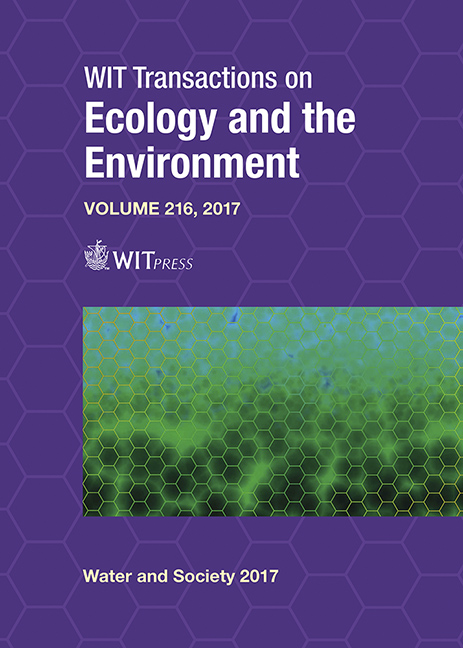PREDICTING DEGRADATION WITH BIOCHEMICAL OXYGEN DEMAND IN DISINFECTANT-POLLUTED SEWAGE
Price
Free (open access)
Transaction
Volume
216
Pages
8
Page Range
313 - 320
Published
2017
Paper DOI
10.2495/WS170301
Copyright
WIT Press
Author(s)
IMOKHAI T. TENEBE, PRAISEGOD CHIDOZIE EMENIKE, DAVID O. OMOLE, NKPA N. OGAREKPE, OMEJE MAXWELL, AIKUOLA A. OLUMUYIWA, OMEJE UCHECHUWU ANNE
Abstract
Most households frequently make use of disinfectants to annihilate infectious bacteria present in toilets and bathrooms. Unfortunately, some of these bacteria may be required for the degradation of sewage in the septic tank system (STS). This paper investigates how the performance (degradation capacity) of sewage will be affected by the inharmonious addition of disinfectants with biochemical oxygen demand (BOD) as the predictor. With a clean 50-litre container, a sewage sample was collected from a waste stabilization pond situated in a Nigerian Tertiary University, transported to the sanitary laboratory in the Department of Civil Engineering, University of Nigeria, Nsukka, and poured into five 4-litre white containers. Different doses of disinfectants – 0.5 ml, 1 ml, 1.5 ml, 2 ml, and 2.5 ml, were simultaneously added only at the initial day of experimental setup under aerobic conditions, and the pH, dissolved oxygen (DO), disinfectant dose, chemical oxygen demand (COD), and BOD were measured every three days for three weeks. Multivariate analysis was performed on the explanatory variable – pH, DO, disinfectant dosage, and COD – using e-Views 8.0, which revealed that the continuous addition of disinfectants to sewage inhibits its degradation, thereby resulting in increased organic loading within the STS, and may further lead to septic tank failure due to shock loading and a major source of ground water been polluted with emerging contaminants.
Keywords
degradation, biochemical oxygen demand, disinfectants, septic tank system, multivariate analysis, sewage pollution





